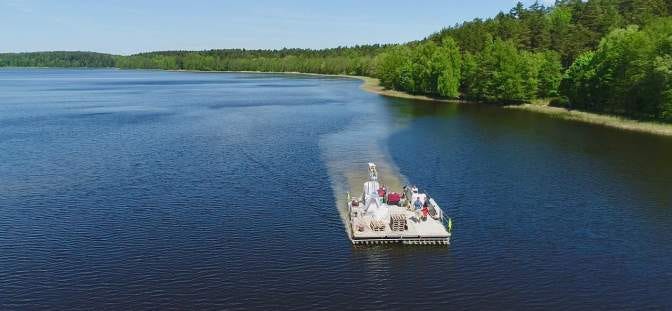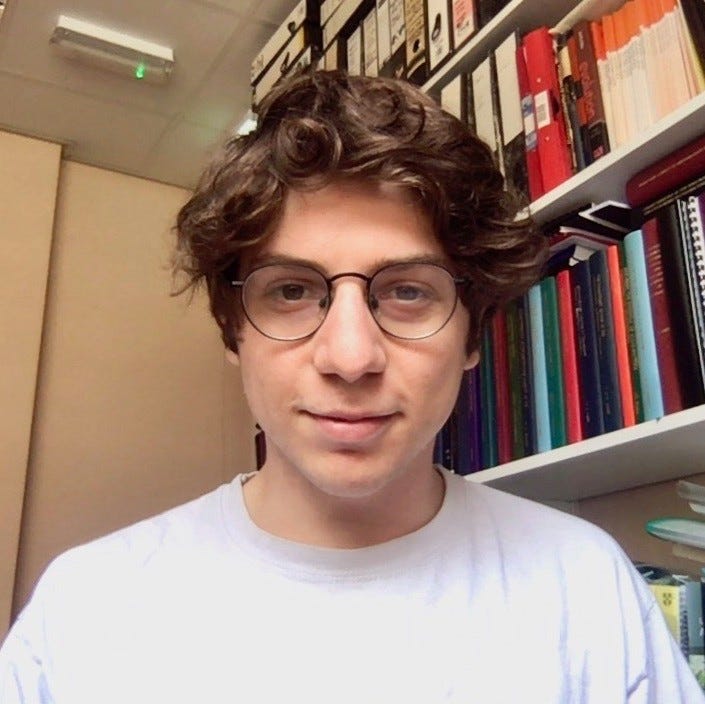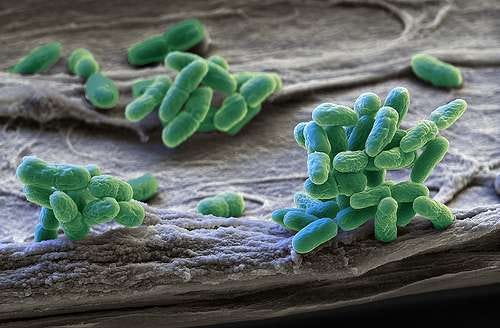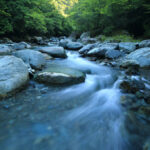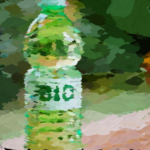€5 Million for Polaris, Leonardo DiCaprio, bioluminescent dolphins and Alberto Scarampi
“The secret is to foster a beginner’s mindset, and surround yourself with good, hard-working people.” — Larsen Mettler, S2G Ventures
Hello algae technophiles and welcome to The Paxtier Report for Wednesday, March 30th 2022! Good news, we’ve discovered the real reason our ancestors were short:
… Somehow, all roads lead back to algae.
In today’s email:
News: Microalgae biofuels make headlines
Chart: Where the seaweed E. radiata is and isn’t
Epic: Bioluminescent dolphins
Fireside chat: Alberto Scarampi del Cairo from Cambridge University
Around the web: What do Leonardo DiCaprio, Gordon Ramsay, and Tom Ford all have in common? They love algae tech.
Markets and Investing
Wow. Here’s to another big week of government climate pledges and corporate transactions as China decided it’ll produce up to 200,000 tonnes/ yr of green hydrogen by 2025, and Apple mentioned that a total of $4.7 billion in green bonds have now been issued to help the company decarbonise its supply chains.
Soon after these headlines, Shopify also took to the stage by announcing the addition of 9 new entrepreneurial teams to its Sustainability Fund, Abu Dhabi flexed its muscles by creating the first regulated carbon credit trading exchange and clearing house in the world, and Nasdaq launched the world’s first carbon removal index.
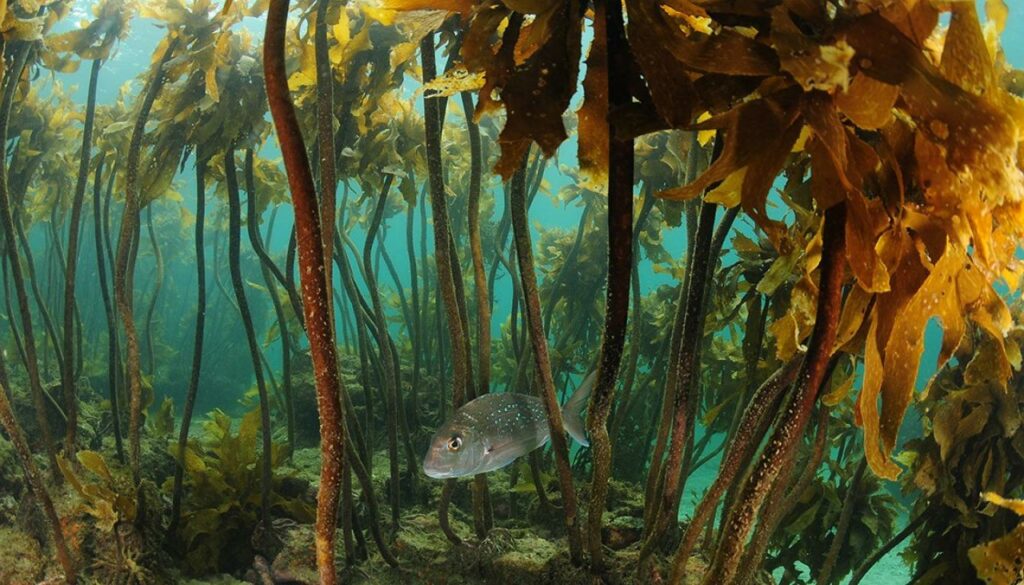
credit Getty
On the algae tech front, things were BUSY too with interesting moves from both big and small players. Highlights included:
1. Tunisian venture WaterSpirit raising $872K to scale its microalgae chemical operations.
2. Umaro Foods securing $3 million in funding for its red seaweed-based bacon.
3. Polaris landing €5 Million to support its nutraceutical microalgae and marine oil brands.
4. The Seaweed Company accessing more growth capital from the Colruyt Group, and Marubeni Corporation purchasing a pioneering blue carbon credit from the Japan Blue Economy Association for CO2 absorption at Eelgrass and Sargassum beds.
If that wasn’t cool enough, biofuels also drew lots of attention this week. Most notably, AECOM announced the signing of a strategic partnership with Genifuel to scale algae fuel operations, and Euglena Co. spent $’s on marketing by flying a commercial plane using microalgal bio-jet fuel, and performing the first test voyage of next-generation biodiesel fuel on a large ferry in Japan. Clearly these guys are fed up with global crude oil prices too…
To cap it all off, Pond Technologies made progress by joining the Ontario Clean Technology Industry Association this week, and Phoslock recorded a relatively optimistic Full Year 2021 Results and Outlook presentation following the negative press and fraud scandal which rocked its China-based operations in 2020.
Extra relevant titbits from climate tech
– DELOS, an Indonesia-based aquaculture-tech company, raised $8m in funding
– Plotlogic, a hyperspectral imaging start-up raised $18m.
– Leo DiCaprio announced his participation in the regeneration.vc team
– Paris-based Kayrros raises €40 million funding to focus on the geospatial monitoring industry
– Sourceful grabbed $20M to make packaging less polluting
– Lord of the Trees closed a $1.2 million pre-seed for drone-based ecosystem restoration and Treeswift, which focuses on monitoring reforestation projects, raised $4.8 million.
In depth with Peter Green
Fireside chat: Alberto Scarampi del Cairo, The University of Cambridge
This week, we sat down with the brilliant Alberto Scarampi del Cairo. Alberto completed his undergraduate degree in Biotechnology at Imperial College London in 2019. During his time there, he developed a real passion for synthetic and systems biology which encouraged him to pursue a PhD with the Howe Group at The University of Cambridge. In this role, he currently explores the molecular mechanisms and genetic components which allow cyanobacteria to produce electricity from sunlight, air, and water. Here’s a teaser from our recent call:
When did you decide you wanted to work with photosynthetic organisms?
It all started with my second-year dissertation under Professor Peter Nixon. Professor Nixon specialises in cyanobacterial research and, for that project, wanted to explore how algae biofilms could be used in various applications.
Thanks to that experience, the following year I decided to explore photosynthetic organisms further by conducting my final year thesis on the paradox of the plankton. This puzzle describes the situation in which a limited range of resources supports an unexpectedly wide range of plankton species, flouting the competitive exclusion principle which states that when two species compete for the same resource, one will be driven to extinction. In contrast with my second-year thesis, this project was more focussed on the mathematics and dynamics behind the paradox. As a result, I spent most of my time modelling the phenomenon and changing the assumptions behind it.
What does your current work with exoelectrogenic cyanobacteria entail?
Essentially, we are interested in extracellular electron transfer in cyanobacteria, which is a naturally occurring and exciting process which can be used for bioelectricity generation. We want to harness these electrical signals by hooking these organisms up to electrodes and creating applications which can serve the electrical needs of people all over the world.
Here’s Alberto making music from cyanobacteria:
Cambridge Biochemistry @CamBiochemElectronic algae music at #BiochemDay2022 #CamFest
Loss of a globally unique kelp forest from Oman
In this recent study by Coleman et al., a group of scientists documented the dramatic loss of the only known northern hemisphere population of E. radiata kelp forests, just off the shores of Oman. The paper describes the sad reality of this discovery, which serves as a stark reminder of the consequences of climate change. According to the investigation, long-term ocean warming in the region and environmental processes such as upwelling cessation are to blame.
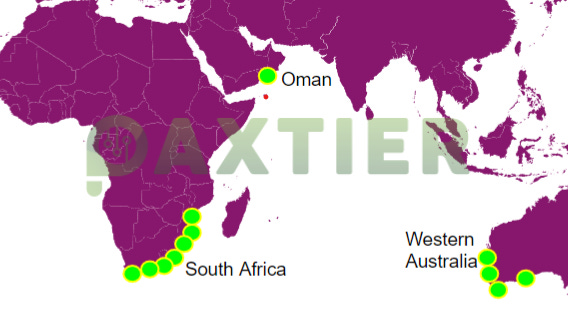
So… What should we do about this? Given the limitations of in situ conservation, the team suggest undertaking proactive measures to secure the biodiversity of this species through the use of germplasm or culture banks. This ex-situ preservation should be used until we can restore ocean conditions or somehow improve the resilience of the kelp forests.
 What’s been hot in algae-tech this week?
What’s been hot in algae-tech this week?
- Gordon Ramsay making gin from mara seaweed
- Grow-Trees.com helps Tamil Nadu’s struggling fishermen to earn a sustainable livelihood from seaweed cultivation
- Tom Ford’s Plastic Innovation Prize Announced Its Eight Finalists And Man Did Algae Feature (check out the algae winners here- well done guys!):
– Kelpi
– Marea
– Notpla
– Sway
– Zerocircle
MERLINA ADDAMS @sabri44220662Dolphins swimming in bioluminescent algae.
- Processed water from the food industry is an excellent fertilizer in seaweed cultivation
- Phoebe Lewis makes cool ink from seaweed
- Early-stage algae start-ups Mediterranean Algae and G2G Algae Solutions join forces
- Scientists Explore Genetic Sensor of Blue Light to Double Oil Productivity in Industrial Microalgae
- Microalgal drugs: A promising therapeutic reserve for the future
- Stimulatory and inhibitory effects of phenanthrene on physiological performance of Chlorella vulgaris and Skeletonema costatum
- A comparative whole-genome approach identifies bacterial traits for marine microbial interactions
- Cyclophilin anaCyp40 regulates photosystem assembly and phycobilisome association in a cyanobacterium
- AlgaeNet: A Deep Learning Framework to Detect Floating Green Algae from Optical and SAR Imagery
Jobs
Cell Biologist – Phycobloom, London, UK
A number of PhD positions in seaweed research at Wageningen University, Wageningen, Netherlands
Multiple positions at Provectus Algae, Noosaville, Australia

Thanks again for joining us this week. Hope you have a great day, and stay tuned for more algae tech updates soon!
Peter



